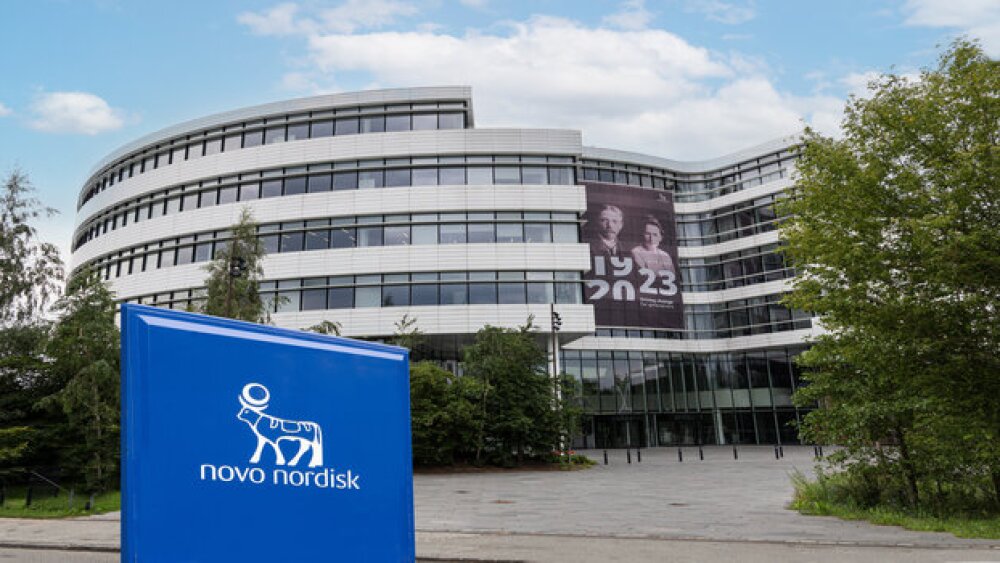RIDGEFIELD, Conn., May 20 /PRNewswire/ -- Boehringer Ingelheim will announce preliminary data in the areas of head and neck cancer and non-small cell lung cancer (NSCLC) for one of the company’s investigational compounds, BIBW 2992. These data will be presented at the 2010 Annual Meeting of the American Society of Clinical Oncology (ASCO) annual meeting in Chicago. BIBW 2992 is an orally-administered small molecule under development that irreversibly inhibits the epidermal growth factor receptor (EGFR/HER1) and human epidermal receptor 2 (HER2) tyrosine kinases.
BIBW 2992 data in head and neck cancer(1)
New data will report preliminary best response analysis for 74/109 patients from an ongoing Phase 2 study of 124 patients with metastatic or recurrent squamous cell carcinoma of the head and neck (SCCHN) who did not respond to platinum-containing therapy. In this study, patients were initially randomly assigned to either BIBW 2992 or cetuximab. Twenty-two percent of the 34 patients receiving BIBW 2992 experienced reduction in tumor size (measured as partial response), compared to 13 percent of the 40 patients receiving cetuximab. Preliminary safety analyses revealed diarrhea and skin-related adverse events as the most common adverse events associated with BIBW 2992.
“Metastatic head and neck cancer has a very poor prognosis, and patients are in desperate need for new treatment options,” says Tanguy Y. Seiwert, M.D., lead investigator of the trial, University of Chicago Medical Center. “These findings, while preliminary, are encouraging and warrant further investigation of BIBW 2992 in head and neck cancer.”
BIBW 2992 data in NSCLC(2)
In LUX-Lung 2, a Phase 2 study, 444 patients with advanced adenocarcinoma of the lung who were untreated or progressed after one course of chemotherapy were tested for common EGFR mutations. Of the patients who tested positive for EGFR mutations, 129 patients received treatment with BIBW 2992. The overall response rates (primary endpoint) for patients with the common EGFR mutations deletion 19 and L858R were 62 percent and 52 percent, respectively. Median progression-free survival (secondary endpoint) was estimated to be 12 months for the overall group. The most common drug-related adverse events were diarrhea and rash (reported in 95% for each), with 18 percent and 19 percent of patients experiencing grade 3 symptom severity, respectively.
LUX-Lung 2 is part of the comprehensive LUX-Lung clinical trial program evaluating BIBW 2992 in various patient populations, all with NSCLC. This LUX-Lung trial program currently comprises five trials.
“Boehringer Ingelheim is using scientific advances to develop a range of targeted therapies in areas of medical need, including various solid tumors and hematological cancers,” said Dr. Andree Amelsberg, Executive Director and Medical Leader Oncology, Boehringer Ingelheim Pharmaceuticals, Inc. “We are pleased with the preliminary results of these Phase 2 studies, which support continued development of BIBW 2992 as a potential new treatment option for head and neck cancer and non-small cell lung cancer.”
About head and neck cancer
Head and neck cancer can occur in over 30 different places in any of the tissues or organs in the head and neck(3) and is the sixth most frequently occurring cancer worldwide.(4) Most head and neck cancers are squamous cell carcinomas,(5) over 90 percent of which express EGFR,(6) which is critical for tumor growth.(7)
About lung cancer
Lung cancer is the world’s most common cancer and kills more people than any other cancer. In 2009, approximately 219,440 new cases of lung cancer were diagnosed in the United States, with 159,390 Americans dying from the disease.(8) NSCLC is the most common form of lung cancer, accounting for about 85 percent of all lung cancers.(8)
About Boehringer Ingelheim in Oncology
Building on scientific expertise and excellence in the fields of pulmonary and cardiovascular medicine, metabolic disease, neurology, virology and immunology, Boehringer Ingelheim has embarked on a major research program to develop innovative cancer drugs. Working in close collaboration with the international scientific community and a number of the world’s leading cancer centers, Boehringer Ingelheim is committed to discovering and developing novel cancer treatments. The current focus of research includes compounds in three areas: angiogenesis inhibition, signal transduction inhibition and cell-cycle kinase inhibition.
BIBW 2992 is currently in Phase 3 clinical development in NSCLC, and was granted Fast Track designation for a treatment indication in NSCLC after prior treatment with an EGFR-tyrosinekinaseinhibitor (TKI) by the U.S. Food and Drug Administration.
Apart from BIBW 2992, Boehringer Ingelheim’s late stage oncology portfolio includes BIBF 1120, also in Phase 3 development for the treatment of patients in two different indications, advanced NSCLC and ovarian cancer. The ongoing LUME-Lung Phase 3 clinical trial program is investigating BIBF 1120 in combination with standard second-line chemotherapy treatments for patients with advanced NSCLC.
BIBF 1120 is an investigational, orally-administered compound that simultaneously inhibits fibroblast growth factor receptor (FGFR), platelet-derived growth factor receptor (PDGFR) and vascular endothelial growth factor receptor (VEGFR), three of the receptor tyrosine kinases (RTKs) shown to aid in the regulation of angiogenesis. The formation and maintenance of new blood vessels (angiogenesis) play a critical role in tumor growth and metastasis.
In the area of cell-cycle kinase inhibition, Boehringer Ingelheim is developing inhibitors of polo-like kinase 1 (Plk1). Plk1 is a key regulator of cell division (mitosis) and is known to be overexpressed in a wide variety of tumors. The company’s compound, BI 6727, is currently being investigated in several Phase 2 studies, including acutemyeloidleukemia(AML), NSCLC and urothelial cancers.
About Boehringer Ingelheim Pharmaceuticals, Inc.
Boehringer Ingelheim Pharmaceuticals, Inc., based in Ridgefield, CT, is the largest U.S. subsidiary of Boehringer Ingelheim Corporation (Ridgefield, CT) and a member of the Boehringer Ingelheim group of companies.
The Boehringer Ingelheim group is one of the world’s 20 leading pharmaceutical companies. Headquartered in Ingelheim, Germany, it operates globally with 142 affiliates in 50 countries and more than 41,500 employees. Since it was founded in 1885, the family-owned company has been committed to researching, developing, manufacturing and marketing novel products of high therapeutic value for human and veterinary medicine.
In 2009, Boehringer Ingelheim posted net sales of US $17.7 billion (12.7 billion euro) while spending 21 percent of net sales in its largest business segment, Prescription Medicines, on research and development.
For more information, please visit http://us.boehringer-ingelheim.com and follow us on Twitter at http://twitter.com/boehringerus.
Abstract numbers relating to this press release: #5501, #7521
References
1. | Seiwert TY et al. “BIBW 2992 versus cetuximab in patients with metastatic or recurrent head and neck cancer (SCCHN) after failure of platinum-containing therapy with a cross-over period for progressing patients: Preliminary results of a randomized, open-label Phase II study.” Oral Presentation. 7 June 2010, Session Time: 8:00 a.m.12:00 p.m. Abstract #5501. | |
2. | Yang CH et al. “A Phase II study of BIBW 2992 in patients with adenocarcinoma of the lunch and activating EGFR mutations (LUX-Lung 2).” Poster Discussion Presentation. 7 June 2010, Session Time: 8:00 a.m.12:00 p.m. Abstract #7521. | |
3. | MacMillan Cancer Support. http://www.macmillan.org.uk/Cancerinformation/Cancertypes/Headneck/Aboutheadneckcancers/Headneckcancers.aspx. Last accessed 7 May 2010. | |
4. | Hunter KD et al. Profiling early head and neck cancer. Nat Rev Cancer. 2005 Feb; 5 (2): 127-35. | |
5. | Lutzky VP. Biomarkers for Cancers of the Head and Neck. Clinical Medicine: Ear, Nose and Throat, 2008:1. | |
6. | Grandis JR and Tweardy DJ. Elevated levels of transforminggrowth factor alpha and epidermal growth factor receptor messengerRNA are early markers of carcinogenesis in head and neck cancer.Cancer Res., 1993. 53:357984. | |
7. | Normanno N et al. The ErbB receptors and their ligands in cancer: an overview. Current Drug Targets. 2005. May;6(3):243-47. | |
8. | Cancer Trends Progress Report 2009/2010 Update, National Cancer Institute, NIH, DHHS, Bethesda, MD, April 2010, http://progressreport.cancer.gov. | |
SOURCE Boehringer Ingelheim Pharmaceuticals, Inc.




